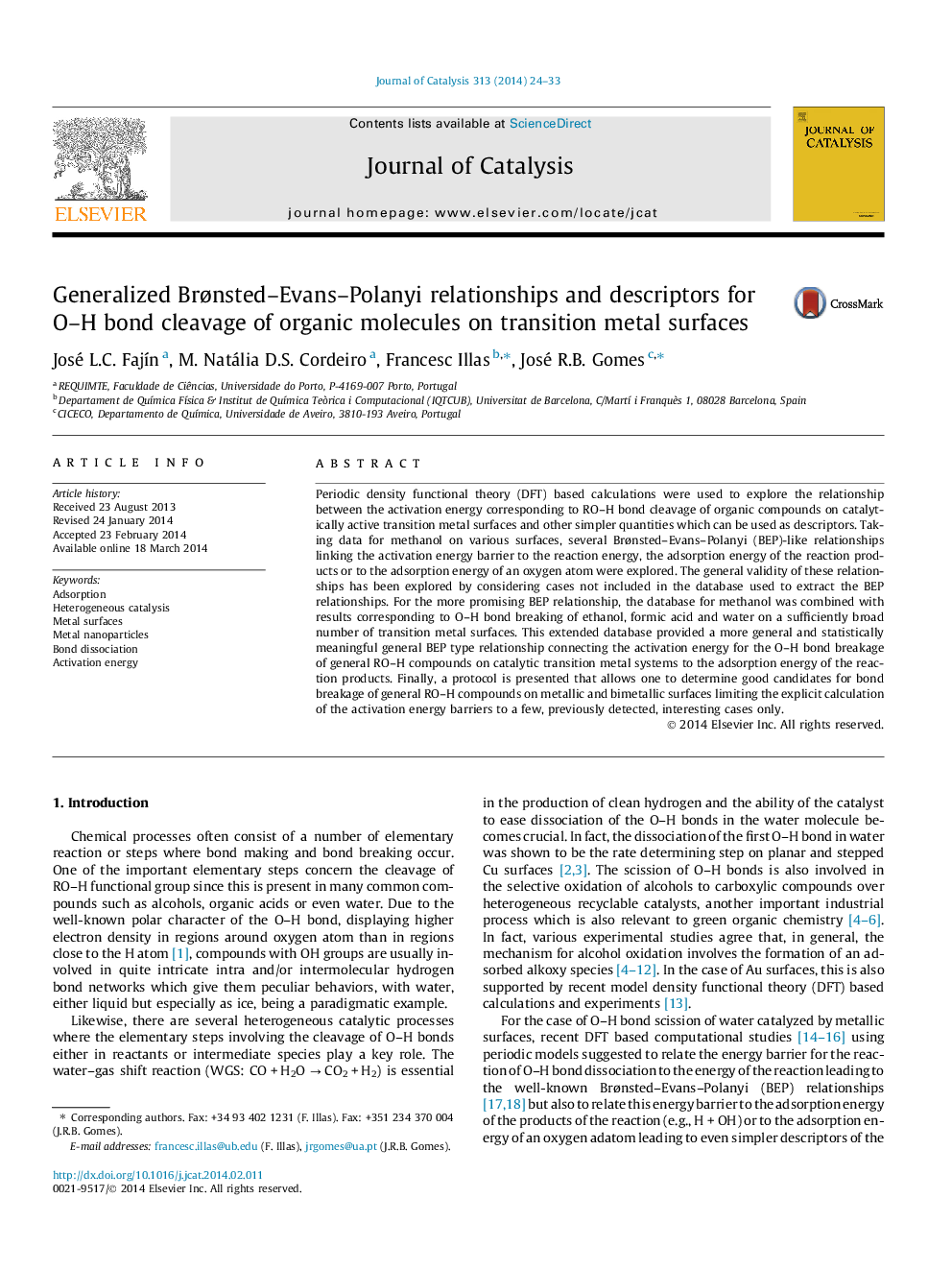| کد مقاله | کد نشریه | سال انتشار | مقاله انگلیسی | نسخه تمام متن |
|---|---|---|---|---|
| 61040 | 47562 | 2014 | 10 صفحه PDF | دانلود رایگان |

• Bond breaking of general RO–H organic compounds on various metal surfaces.
• Brønsted–Evans–Polanyi like relationships for the O–H bond break in organics.
• Activation energy for the O–H bond break versus adsorption energy of the products.
• Mean absolute error for the BEP is 0.13 eV.
• Good agreement between estimated and calculated data for a test set.
Periodic density functional theory (DFT) based calculations were used to explore the relationship between the activation energy corresponding to RO–H bond cleavage of organic compounds on catalytically active transition metal surfaces and other simpler quantities which can be used as descriptors. Taking data for methanol on various surfaces, several Brønsted–Evans–Polanyi (BEP)-like relationships linking the activation energy barrier to the reaction energy, the adsorption energy of the reaction products or to the adsorption energy of an oxygen atom were explored. The general validity of these relationships has been explored by considering cases not included in the database used to extract the BEP relationships. For the more promising BEP relationship, the database for methanol was combined with results corresponding to O–H bond breaking of ethanol, formic acid and water on a sufficiently broad number of transition metal surfaces. This extended database provided a more general and statistically meaningful general BEP type relationship connecting the activation energy for the O–H bond breakage of general RO–H compounds on catalytic transition metal systems to the adsorption energy of the reaction products. Finally, a protocol is presented that allows one to determine good candidates for bond breakage of general RO–H compounds on metallic and bimetallic surfaces limiting the explicit calculation of the activation energy barriers to a few, previously detected, interesting cases only.
Figure optionsDownload high-quality image (95 K)Download as PowerPoint slide
Journal: Journal of Catalysis - Volume 313, May 2014, Pages 24–33